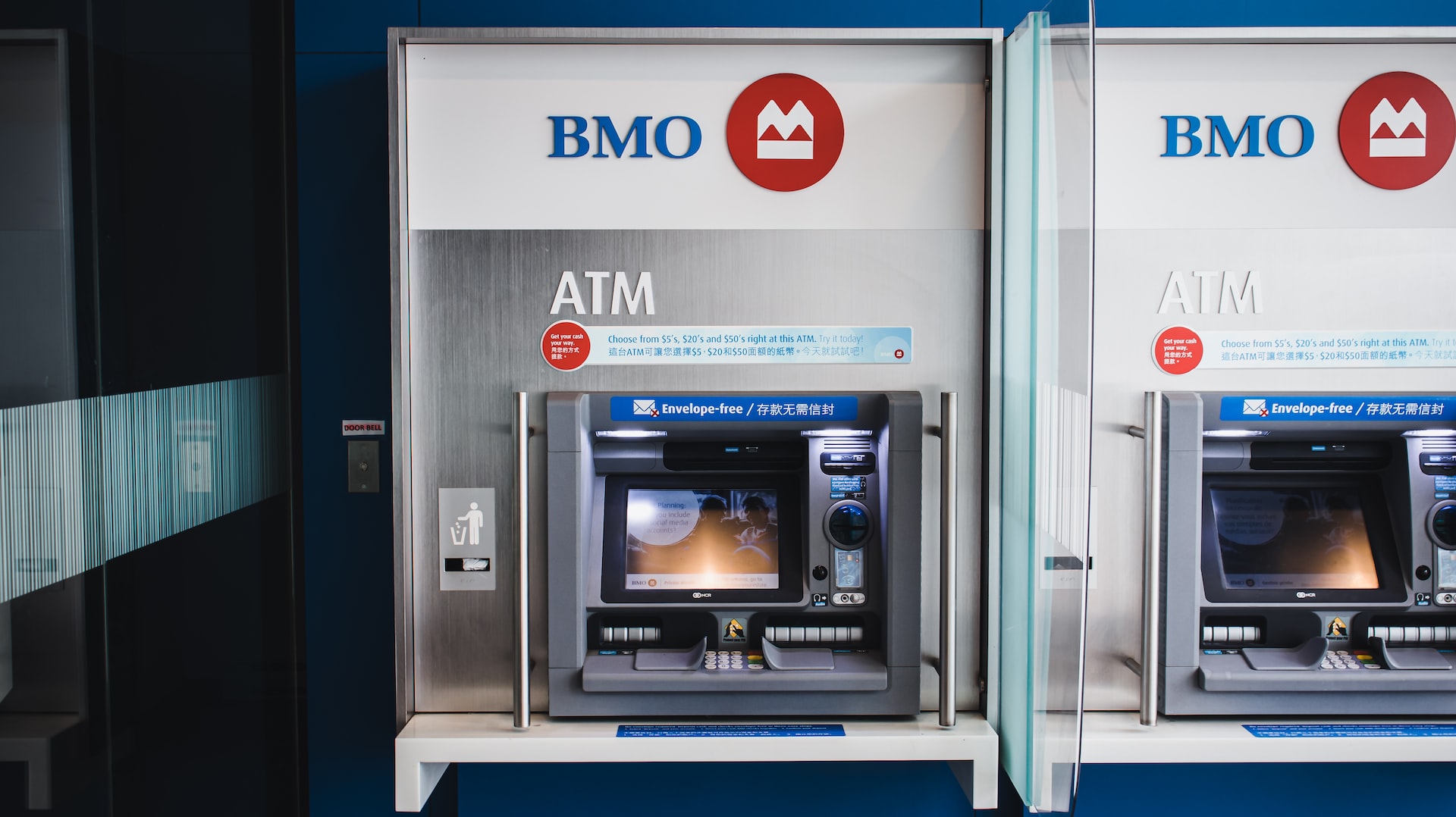Credit cards increase our spending power and make it easier to buy goods and services. You can tap into your line of credit for any purchase, but not every business accepts credit card payments. You may also need extra cash to cover rent or an auto loan payment. Consumers can use a credit card cash advance to obtain additional funds.
You can get a cash advance online, but some people need physical cash. For example, some people use nearby ATMs to withdraw money from their bank accounts. Do these machines also cater to credit cardholders, and are they the best approach? We will discuss the details.
Can You Withdraw Cash Using Your Credit Card?
Borrowers can use their credit cards to withdraw cash from ATMs. This withdrawing option can give you the cash you need while avoiding an overdraft fee if you do not have enough funds in your checking account. If you obtain money through this approach, it is a credit card cash advance. Knowing the fees and rates will help you determine if a cash advance is right for you.
What are Credit Card Cash Advances?
Credit cards let you pay for today’s expenses with tomorrow’s wages. Each transaction gets you closer to your credit limit, a number you want to stay as far away as possible. Credit card cash advances let you borrow against your credit line. You receive cash right away, but your credit card debt increases.
How Do Credit Card Cash Advances Work?
Credit card cash advances are loans. You can borrow against a percentage of your credit card’s limit and repay the debt over time. However, interest immediately accumulates on your cash advance, removing the grace period you’ll find in other credit card transactions. Credit card issuers will set a maximum percentage you can borrow against your limit. This hard cap offers issuers some protection, and they can adjust this limit anytime.
How to Withdraw Cash at an ATM
You will need a debit or credit card to withdraw cash from an ATM. After inserting your card into the ATM, you will have to provide your card’s 4-digit PIN. The cash withdrawal option applies to debit cards, while the cash advance option applies to credit cards. You will then have the opportunity to enter how much cash you want to withdraw. Next, the ATM will ask you to agree to any transaction fees. After you agree to the terms, you will receive your cash.
Is There a Limit to How Much You Can Withdraw?
Credit card issuers set a limit based on your credit line. They let you withdraw up to a predetermined percentage of your credit limit. A higher credit limit and lower credit card debt will increase your maximum cash advance. You may also have daily transaction limits from your credit card issuer or ATM. Finally, you cannot withdraw more money than you have remaining before you hit your credit limit.
Why Using Your Credit Card at ATMs May Not Be a Good Idea
Using your credit card at an ATM isn’t the best move. Credit card transactions cost more than debit card transactions and can hurt your financial health. Here are some risks to consider before taking out a credit card cash advance.
It Might Affect Your Credit Score
A cash advance increases your credit card debt, and that higher debt will hurt your credit utilization. Credit utilization measures the percentage of used-up space in your credit limit. For example, if you have a $10,000 credit limit and owe $6,000 in credit card debt, you have a 60% credit utilization ratio. A credit utilization ratio above 30% will hurt your score, and it’s optimal to stay below 10% credit utilization.
A cash advance can also hurt your ability to repay debt. Each additional debt makes the uphill battle more challenging. Some consumers may get too comfortable with immediate cash from credit card transactions at ATMs and go deeper into debt. This can create a negative cycle and make it more challenging to keep up with other debts. Falling behind on any debt will hurt your credit score. Credit bureaus will be notified about your late payments and will change your credit score accordingly. Payment history is the highest credit scoring category, making up 35% of your total score.
Cash Advance Fees
You will get charged a cash advance fee the moment you obtain the funds. Most credit card issuers charge a fee equal to 5% of the cash advance’s value. If you borrow $500, you will likely owe a $25 cash advance fee. This fee does not free you from the ATM’s fees, which can add a few dollars to your total upfront costs.
High-Interest Rates
Credit card interest rates are already high, but people who take out cash advances face an additional hurdle. You will pay a higher interest rate on a cash advance versus ordinary credit card debt. Interest rates vary, but you could pay at close to 30% APR. That interest will compound over time and can put cardholders in unfavorable positions.
Other Cash Advance Alternatives
Credit card cash advances can become more trouble than they’re worth. A high upfront fee and immediate interest accrual can discourage any consumer. However, some people need cash upfront, even if they have to borrow it. Cash advances are not as financially troublesome as payday loans, but consumers should still have better choices. We have outlined several cash advance alternatives that can give you what you need without putting your financial health in jeopardy.
Plan and Budget Your Finances
Planning your finances will help you avoid scenarios where you have to take out a cash advance. Minimizing expenses and knowing where your money goes will preserve the money in your bank account. Each credit card statement lets you see how you use your cash. Monitoring your spending history can help you cut costs and determine what is essential. If you have never tracked your expenses or haven’t stayed on top of them for several months, you can save a lot of money this way.
Build Your Credit First
Some consumers optimize their budgets but still find themselves in positions where they have to borrow money. While a cash advance is not the best solution, increasing your credit score can reduce the burden. Lenders assign interest rates based on your credit score. Credit card companies view high-credit borrowers as less risky than consumers with low credit scores. The lower perceived risk translates into lower APRs, which will make it easier to repay debt.
Use a Debit Card at an ATM
You won’t have to worry about a cash advance limit, additional fees, or paying high interest. A debit card lets you access any amount of cash as long as you have enough funds in your checking account to support the transaction.
Getting a Personal Loan or a Line of Credit
Personal loans and lines of credit are useful financial products that let you borrow additional capital. Personal loans tend to have fixed interest rates and let you stretch your payments across multiple years. Fixed monthly payments start right away.
Lines of credit also give you a lump sum, but they have variable interest rates. You also aren’t obligated to make high monthly payments. As long as you make the minimum monthly payment, you’re good. You will not pay interest on your line of credit until you borrow against its credit limit.
It’s possible to get either of these products from a financial institution or a credit union. You can typically borrow more money with these loans than with a cash advance, and the interest charges are usually more generous than credit card cash advances.
Mobile and Internet Banking
Accessing your balance from anywhere will make you less susceptible to cash advances. Some mobile banks also come with enhanced features like 0% APR for cash advances of $500 or less. These apps can save you a lot of money if you only need a small cash advance.
However, you have to build up your financial history to receive the maximum cash advance amount. Some mobile banking apps limit you to a $50 cash advance when you are getting started. They have different eligibility requirements that determine your maximum cash advance.
Frequently Asked Questions (FAQs)
The maximum cash advance varies for each credit card. You should check your credit card’s terms before requesting a cash advance.
A pay code-enabled ATM lets you withdraw money from a credit card even if you do not have a PIN. However, you may need your PIN for other ATMs. You can also request a cash advance at your local bank to bypass the PIN requirement.
Yes. You can get cash back with your credit card. Some credit card companies offer cash back rewards. You can end up with unlimited 2% cashback across all categories or elevated cashback rewards for certain spending categories.







